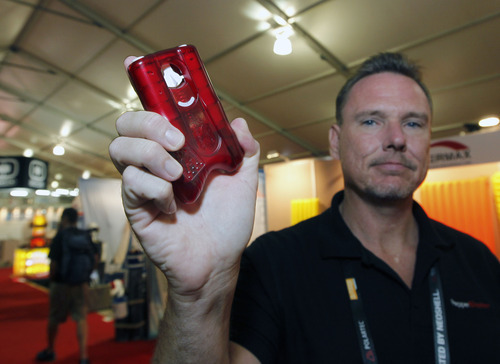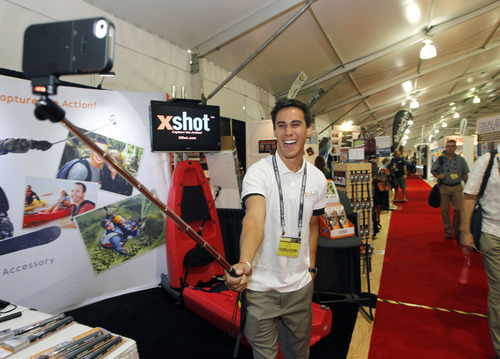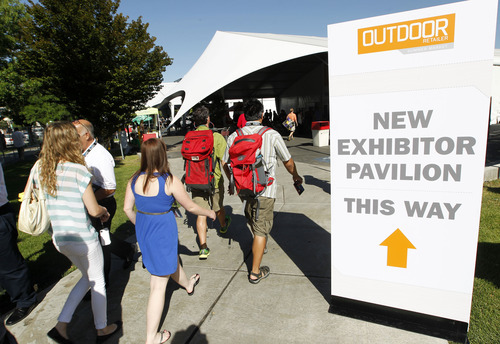This is an archived article that was published on sltrib.com in 2012, and information in the article may be outdated. It is provided only for personal research purposes and may not be reprinted.
One of the consequences of the Outdoor Retailer Summer Market trade show outgrowing the exhibit space in the Salt Palace Convention Center is that organizers erect giant tents as close as possible to the huge facility to handle the overflow of exhibitors.
That's again the case this week, with two 30,000-square-foot tents housing 500 vendors on South Temple, north of the Salt Palace.
New exhibitors who don't have a history with Outdoor Retailer generally occupy this space. Wise retailers attending the show in search of products they'll sell to consumers know that some of the event's most innovative items often appear in booths outside the Salt Palace. But vendors generally worry that the outlying exhibit area doesn't draw the same kind of traffic found on the inside of the comfy convention hall.
That didn't seem to be a problem Thursday when the trade show that has brought close to 30,000 people to Salt Lake began its four-day run. In fact, exhibitors who admitted to being skeptical about the location of their booths were pleasantly surprised by the heavy traffic at the show, which is not open to the public.
"This was only our second time exhibiting and we were pretty dubious," said Kim Sorensen of Pleasant Grove, owner of Blender Bottle, which sells a water bottle that has a whisk inside allowing for ease of mixing sport drinks and weight-loss powders. "But the traffic has been good."
John Myers of New York, whose company was exhibiting products that included a portable phone charger and exercise poles designed to help folks lose weight, found himself tucked into a back corner of the tent pavilion. But he was amazed at the foot traffic and said his booth had been busy.
"I like being in the new-product" exhibit space, said Phillip Dozier of TuffTruckBag, an Alabama-based company that sells heavy-duty, waterproof truck bed cargo bags. "People are interested in what's new. "
Lori Mullin of Medicine Hat, Alberta, was another first-time exhibitor who found herself near the back of the tent. She didn't know what to expect, but said the early part of the first day had produced plenty of interest in her product, the Toasty Tush. It uses the body's own heat to warm either a camp chair or a stadium seat and is typical of the kind of innovation on display in the tents.
More than a few of the new-product exhibitors are Utah-based companies.
Eric Child of Draper was displaying the Stove in a Can, which uses fuel cells to cook meals or boil water. The self-contained product was designed for the emergency market, but he has made two smaller versions that sell for as little as $8 and appeal to outdoor users.
Sport-Vue of Salt Lake City exhibited cameras designed to be attached to clothing or gear to shoot action sports of all types. The cameras will retail from $50 to $265.
There also were a tent shaped like a 1965 Volkswagen van and an armband for runners and hikers that includes a 16-ounce water bottle and a pocket to carry food, money or a smart phone.
Ron Dudzic of Elmsford, N.Y., promoted the PepperBlaster, a way of delivering pepper spray at 112 mph in extreme temperatures using a nonpressurized system for self-defense or for bikers or joggers to repel aggressive dogs.
Mike Margolis of Boulder, Colo., who founded the Crocs shoe company, is focusing on back health with his product Backjoy, a mechanical seating device designed to help improve posture by making users sit up straighter.
Twitter: @tribtomwharton







